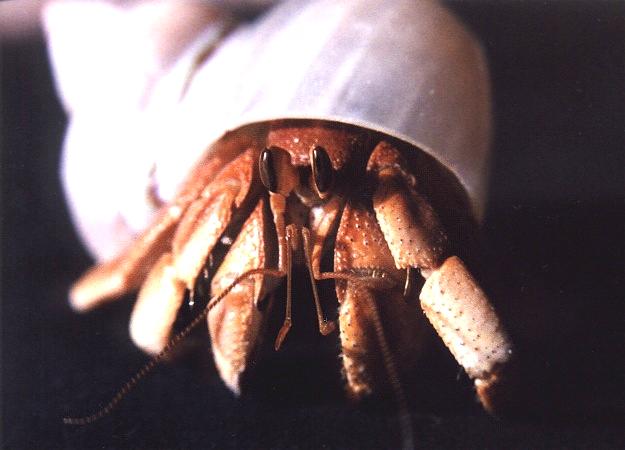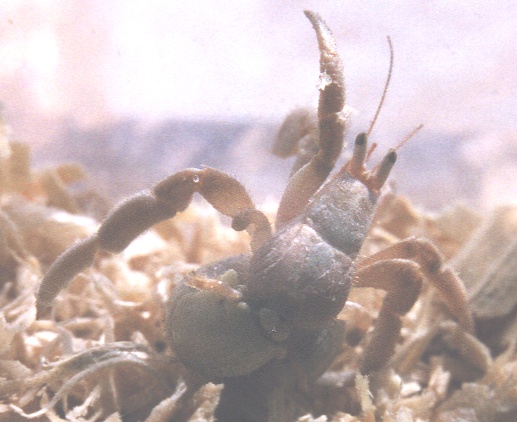

Coenobita variabilis
Hermit crabs “borrow” empty shells and inhabit in them because their body has a soft ending part, which they need to cover. When they grow they find larger shells to occupy. They can be found up to 100 m or so from the beach, usually near mangroves, but also on sand and rocky beaches. They are very active nocturnal scavengers, attracted to decaying material, such as dead fish on the beach, and even to household garbage. They can live well over a decade. Native to Northern Australia, from Exmouth Gulf to north Queensland. They are sold commercially as household pets.
The crab in the above picture is not just any anonymous one. It’s a crabby with a name! It’s Kingler, our pet crab, the largest one in the tank at home. The next picture shows another one. The picture was taken while it was changing shells, so the soft part of its body can be seen.
We keep using “it” and “its” for our crabbies, because we have no idea what
their sex is. Only an expert can tell, as male and female look very much alike.
No, we are not in any great danger of finding our tank full of little crabbies
one day, because hermit crabs usually mate only by the beach. In captivity...
well, they just behave themselves! ![]()
P.S.: After reading the above, a visitor sent me this information for how to
find the sex of a hermit crab: “The segment where the legs join to the body will
have a spot on each side on the 2nd pair of walking legs if it is a female....if
not it is male.” Wow! ![]()

Family Coenobitidae
Superfamily Paguroidea
Infraorder Anomura
Suborder Pleocyemata
Order Decapoda
Superorder Eucarida
Subclass Eumalacostraca
Class Malacostraca
Subphylum Crustacea
Phylum Arthropoda
Kingdom Animalia
Life on Earth
Index